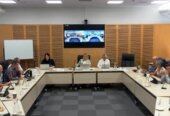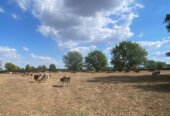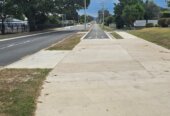
An exhibition of wartime artefacts opens at Ōtorohanga Museum on Anzac Day.
An Anzac exhibition opening at Ōtorohanga Museum this month, complete with an army tank in situ on the day, is inviting input from around the region.
‘Lest We Forget’ opens at the Girl Guide Hall adjacent to the museum on April 25, directly after the Anzac Day 10am service at Ōtorohanga’s Memorial Park. It will then run daily from 10am to 4pm until May 1.
The exhibition is the second in a series of five planned by the Ōtorohanga Historical Society (OHS) to engage more with the wider community and broaden its knowledge base. The first, entitled ‘Mapping Our Town’, opened in late February and was declared by OHS committee member Amanda Kiddie as have far exceeded expectations, netting valuable information and attracting positive feedback.
“This new exhibition will be along the same lines,” she said. “We want to invite the community to bring us the stories and photos of family members who were involved in conflicts, and to help us identify people in the photographs that we have. We also want stories of the people left behind, the wives, mothers, sisters.
“There will be people on site every day during the exhibition to help record those stories, or help scan the images brought in. Visitors might find photographs of their family members here, ones they haven’t seen before, and can help us identify those people.”
Amanda said the ‘Lest We Forget’ exhibition will showcase items including photographs, newspapers, books and letters, military hardware and items such as stretchers, uniforms and parachutes. Different areas will cover different conflicts, including the Boer War, two World Wars, Egypt, the Maori Battalion, and the Home Guard. An army tank will be parked outside the museum on Anzac Day.
RSA president Richard Holt was upbeat about the exhibition. “The museum has had a lot of RSA material stored, and over the past few weeks has been getting it out and ready for display. It should be a very good exhibition.”
Part of the community engagement aspect includes a suggestion that visitors take away and try out wartime recipes.
“It was a time of rationing … households had to make do with very little. We want people to take home some of the recipes we found, cook them according to the ingredient list of the era and post the results on Facebook, tagging the museum in,” Amanda said. “We are also looking for more information about the Red Cross. We need more wartime information about that.”
She said the exhibition was a first step in the museum’s journey towards mounting a permanent Anzac exhibit.
“We want people from the region to get behind it and visit the exhibition. We want the stories and pictures of their people.”








